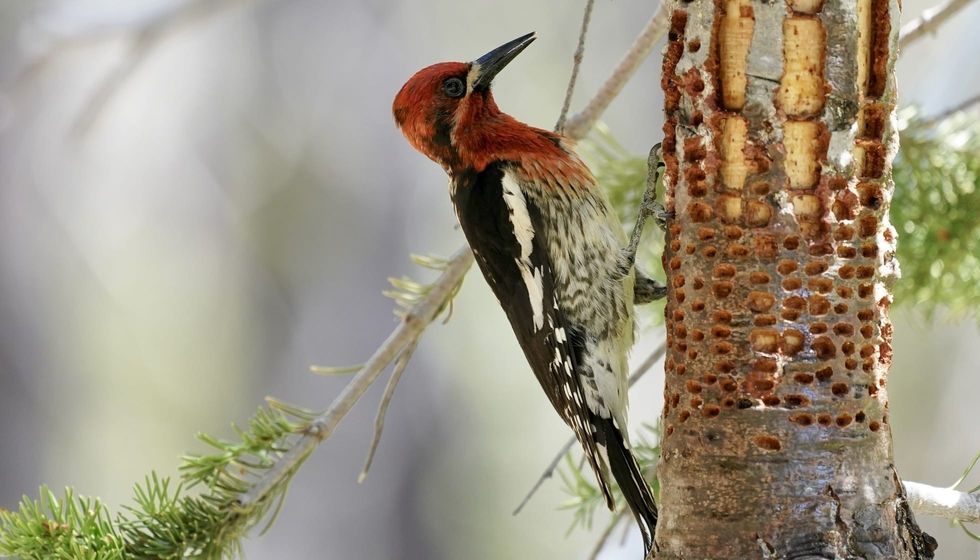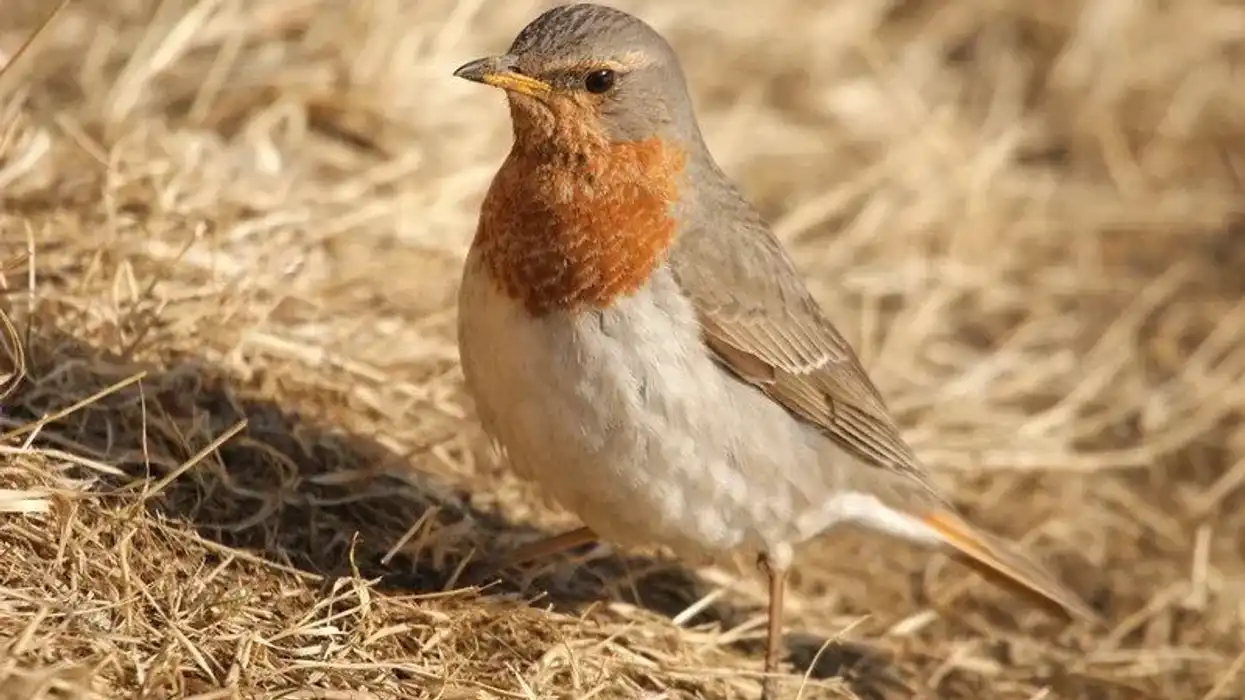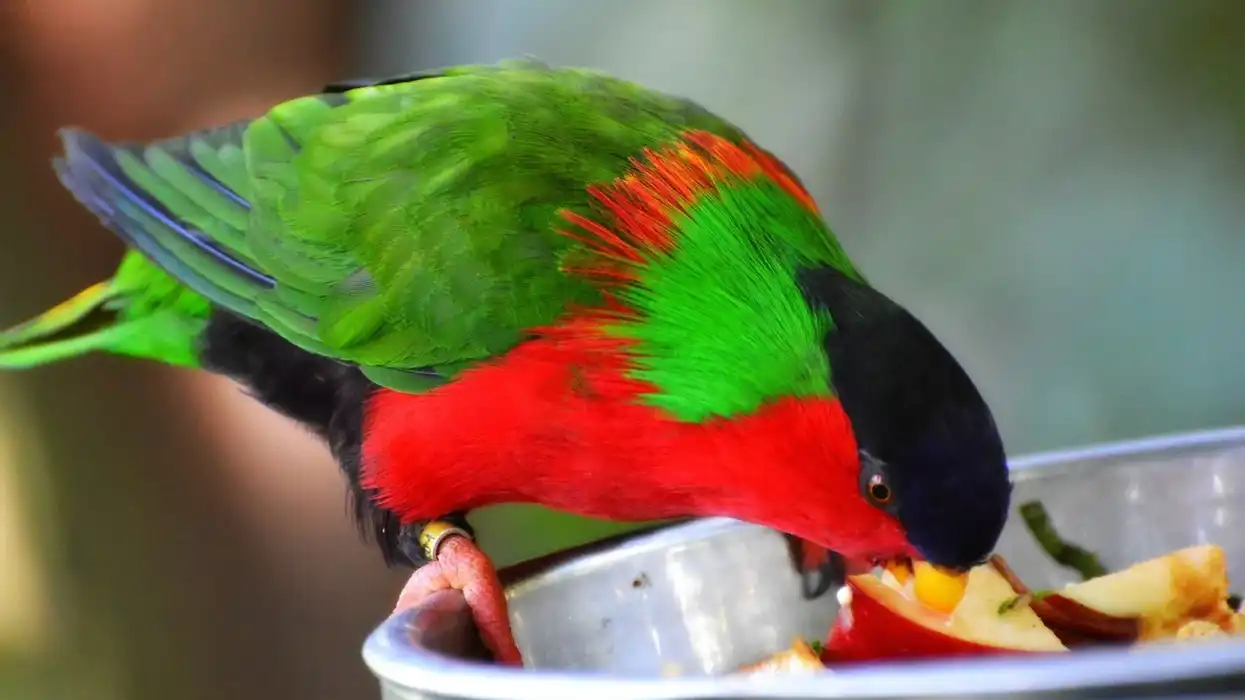Red-breasted sapsucker (Sphyrapicus ruber) is one of the four species identified from the genus Sphyrapicus. This species is native to the deciduous and coniferous forests of North America where it prefers to nest.
This particular species of sapsuckers is extremely harmful to the trees as the holes which it makes into the tree for sap offers entry to the bacteria and fungi, leading to various diseases. Moreover, the weakened physical structure of the tree poses several other challenges.
The distribution range of these North American birds ranges from Alaska and British Columbia in the north to the Pacific Coast in the south. Here are some interesting facts on the red-breasted sapsucker birds that you will certainly enjoy. Afterwards, do check our other articles on weaver bird and green pheasant as well.
Red-Breasted Sapsucker Interesting Facts
What type of animal is a red-breasted sapsucker?
Red-breasted sapsucker (Sphyrapicus ruber) is a medium-sized woodpecker endemic to North America's west coast woodlands. These North American birds can be found along the Pacific Coast usually at lower elevations. During winter, like red-naped sapsucker birds, these woodpeckers can be found far south, till northern Baja.
What class of animal does a red-breasted sapsucker belong to?
Red-breasted sapsucker belongs to the Aves class of animals and is from the family Picidae. This species is sometimes also known as the yellow-bellied sapsucker. Their habitat range in North America spans across lower elevations ranging from Alaska and British Columbia in the north to the Pacific Coast in the south.
How many red-breasted sapsuckers are there in the world?
Red-breasted sapsuckers are common in the Rocky Mountain and Great Basin regions. However, populations of these woodpeckers have probably fallen slightly as a result of forest clearance in the northwest, although the bird is still very common.
There is no estimation regarding how many sapsuckers are left in the world but it is believed that no conservation efforts are required at the moment for the preservation of their populations.
Where does a red-breasted sapsucker live?
Red-breasted sapsuckers live in Coniferous aspen groves, woodland, and other trees in winter. These birds can be found in hemlock or spruce forests along the northwest coast.
Further south in the Alps, these birds are found in pine forests, usually with a mix of deciduous trees such as alder, aspen, and willow. Some woodpeckers of this bird species migrate south or into lowlands during the winter.
What is a red-breasted sapsucker's habitat?
Red-breasted sapsuckers are primarily found in western Washington living in mixed woods present in the region as their nesting home. These woodpeckers prefer dense woods for their habitat but will breed in an area with sparse vegetation if there are several huge nesting trees nearby. These birds are also seen in riparian areas with huge cottonwood trees.
Who do red-breasted sapsuckers live with?
These birds live in groups called a slurp of sapsuckers across their distribution range. These birds are therefore regarded as a social woodpecker species. The nest for these woodpeckers can be usually found in cavities in a dead tree.
How long does a red-breasted sapsucker live?
An adult sapsucker bird can have a lifespan range of up to two to three years in the wild. These woodpeckers might live for a bit longer if suitable breeding conditions are available in their preferred habitat of old-growth forests.
How do they reproduce?
The nesting habitats and habits of these birds are not understood well yet across their distribution range. These woodpeckers form monogamous partnerships, with both members excavating the nest chamber.
The nest of these birds are generally found in a variety of deciduous trees but sometimes in coniferous trees as well. Female woodpeckers lay four to seven eggs which are normally incubated for 12-13 days by both the parents.
The parents provide food for the young and young birds fledge after around 28 days. Each year, red-breasted sapsuckers raise only one generation.
What is their conservation status?
The conservation status of these sapsuckers is that of Least Concern at present. But as their population has witnessed a decline over the years in their breeding range, conservation efforts are necessary to save them from extinction.
Red-breasted sapsucker Fun Facts
What do red-breasted sapsuckers look like?
Red-breasted sapsuckers resemble red-naped sapsuckers in appearance, but they have red heads and breasts. Their upperparts are black and white barred, and each black wing has a distinctive white stripe. They lack the black breast-band of the opposite two pecker species found in Washington.
They are also yellow-bellied. Males and females appear to be very similar. Although juveniles are mottled brown, they have white wing-stripes like adults.

*Please note that this is an image of a Yellow-bellied Sapsucker, not a Red-Breasted Sapsucker specifically. If you have an image of a Red-Breasted Sapsucker, then please let us know at hello@kidadl.com.
How cute are they?
Red-breasted sapsuckers are colorful which makes them look more adorable and they often receive attention from people because of their appearance.
How do they communicate?
Red-breasted sapsuckers communicate through both visual and audible means. The habits of the red-naped sapsucker are regarded to be essentially comparable to those of this red-breasted bird species. In addition to the puffing of the chest and neck feathers, actions such as head swinging may occur. The screeching calls are mostly employed when an adult bird is in danger.
How big is a red-breasted sapsucker?
This bird can grow up to an average size range of 8-9 in (20-23 cm) with a wingspan size of 14.6-16 in (37-41 cm).
How fast can a red-breasted sapsucker fly?
These birds are estimated to be fast flyers like other woodpeckers from the family. The average speed has been ascertained to be around 34 mph (55 kph).
How much does a red-breasted sapsucker weigh?
An adult red-breasted sapsucker weighs around 1.9-2.2 oz (53-64 g), whereas, a red-naped sapsucker weighs 0.07-0.14 lb (0.03-0.066 kg).
What are the male and female names of the species?
There is no specific name for a male and female red-breasted sapsucker. Hence, they are known as male red-breasted sapsucker and female red-breasted sapsucker, respectively.
What would you call a baby red-breasted sapsucker?
There is no specific name for a baby red-breasted sapsucker from the family Picidae. They are simply called young red-breasted sapsuckers.
What do they eat?
Tree sap is the primary food source for red-breasted sapsuckers from the family Picidae. Insects and fruit are also eaten by them. During the breeding season, they collect more insects and feed them to their young.
Are they dangerous?
No, red-breasted sapsuckers are not dangerous to humans. They like feasting on sap extracted from deadwood trees, and these birds are generally not considered dangerous. If you want to get rid of these birds, you may either spray them with water, cover the holes with a sticky bird deterrent, or use reflective objects to scare them off.
Would they make a good pet?
No, they are not meant to be kept as a pet as they are migratory birds and have to peck trees as a daily routine, which cannot be done in a home environment.
Did you know...
Hummingbirds and warblers accompany red-breasted sapsuckers and feed on the sap and insects found around the drilled holes.
When red-breasted sapsuckers learn to drill holes and feed on the sap that drips from wounded trees, they are ready for independence.
What is the difference between a sapsucker and a woodpecker?
The distinction among woodpecker and sapsucker is that woodpecker is certainly considered one among many species of fowl from the subfamily piscinae, with a pointy beak appropriate for pecking holes in timber at the same time as sapsucker is a woodpecker of the eastern US (of the genus Sphyrapicus) that feeds especially at the sap of trees.
Woodpeckers make a variety of cackles, chirps, and other loud sounds, while sapsuckers make a loud mewing waah. Drumming is a peculiar slow irregular tapping that may be replicated by tapping on a tree with a stick.
What trees do sapsuckers like?
Sapsuckers like hardwoods in addition to conifers. Foraging on timber with skinny bark, like birch, is preferred. Sapsucker damage is much less probable in older conifers with thick, ridged bark. Coniferous forests account for over 1/3 of the world's forests and are discovered in northern quantities of North America, Europe, and Asia wherein temperatures are frequently lower.
Here at Kidadl, we have carefully created lots of interesting family-friendly animal facts for everyone to discover! For more relatable content, check out these Hawaiian hawk facts and sulfur-crested cockatoo facts pages.
You can even occupy yourself at home by coloring in one of our Alaska state bird coloring pages.










